Finding interesting and unusual ways to use LEGO pieces is one of the joys of the LEGO hobby. Sometimes these discoveries are made after lots of trials and errors, and other times they happen by complete accident. One LEGO fan who has been consistently coming up with surprising uses for LEGO elements is Josephine Monterosso. Josephine’s specialty is recreating the shape and movement of the human body with LEGO pieces, using unexpected techniques and unconventional combinations. 🙂
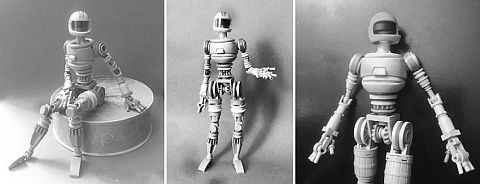
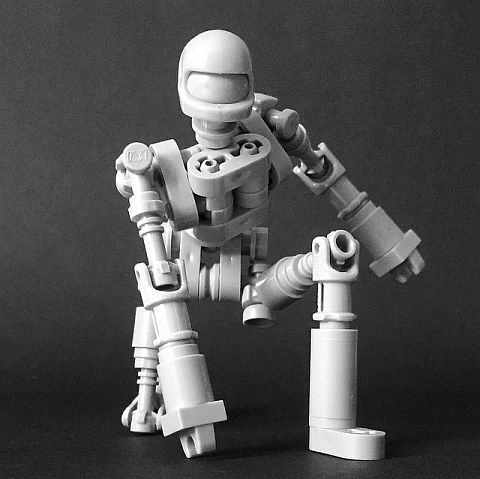
I first became aware of Josephine’s work when I stumbled upon her fully articulated and elegant looking LEGO robots, pictured above. As you can see, the entire body, and especially the joints, take advantage of the shapes and connection-points of mostly small LEGO pieces. It’s worth studying these pictures to see how all the attachments are made. Josephine also shares separate pictures of some of the trickiest connections, in case you want to try them out. See her flickr gallery here.
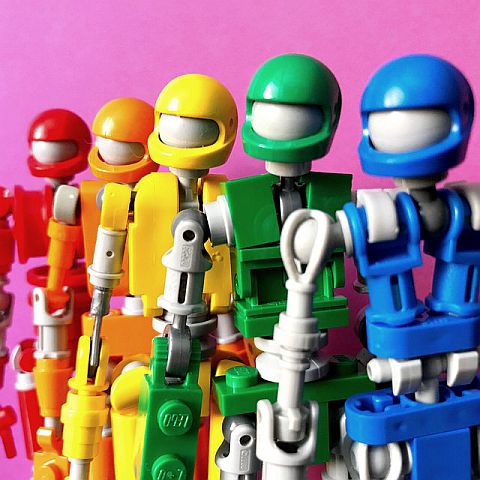
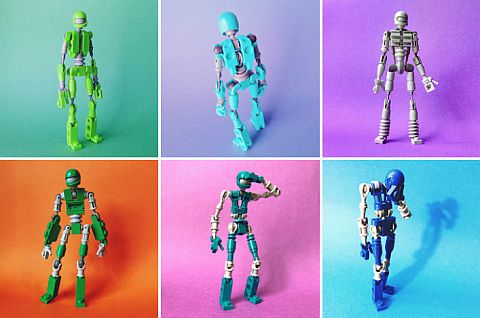
Josephine made a number of other fully poseable robots, each of them incorporating different techniques for joint articulation. The picture below, shows some of the ways the shoulder-connection has been achieved for the robots above, using everything from lightsaber hilts to egg beaters.
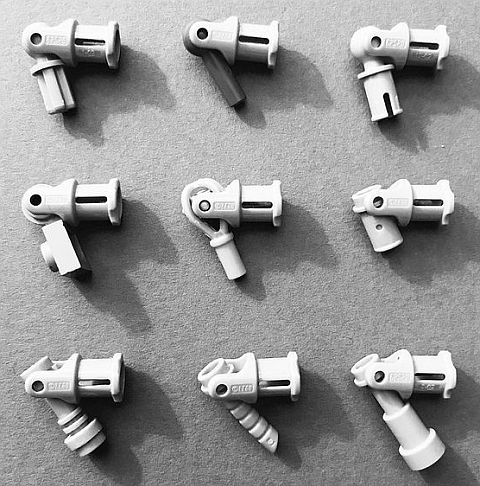
And of course, these combinations can also be used on a larger scale, as demonstrated below, where a larger robot’s arm holds one of the smaller bots. Josephine says she is still working on the larger robot, but progress is slow, as she is trying to work out different combinations for the rest of the body that looks good and also stable.
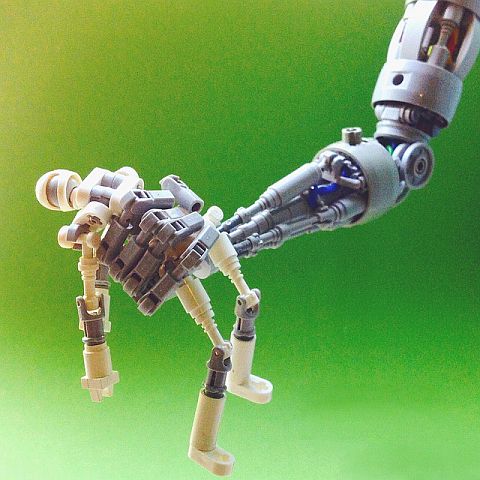
If you would like to experiment with building humanoid robots, the best place to start is to begin gathering the smallest and most interesting looking LEGO pieces you have. Minifigure accessories, weapons, ball-joints, clips, hinges, pins, bars, small gears, wheels, and Technic pieces are some of the most useful. For larger panelings (like the chest piece of the robot on the first picture) look for parts with unusual moulding. Sometimes all you need to do is turn a part upside down or backwards to reveal some interesting details. I keep interesting parts like these separate, in a special “greebling box”. I’m using one of the LEGO Juniors boxes made by Room Copenhagen.
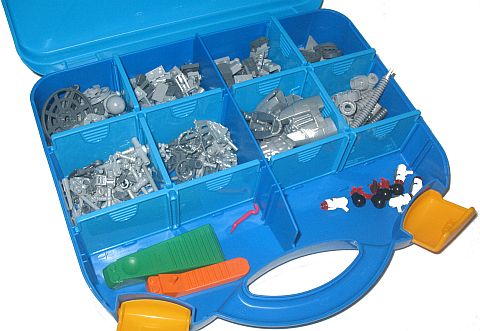
LEGO themselves made some sets that are perfect for filling your greebling box with unusual elements. The #21109 LEGO Ideas Exo Suit released in 2014 is one of the best examples. The LEGO Mixels series is also a great source of interesting little parts and joints. Next time you build a set, take a bit of time to really explore the shape and functionality of the parts, how LEGO designers used them, and what else you could think of using them for. Sometimes all it takes is to realize; hey, this part looks like a face when I turn it upside down! See some great examples below, also by Josephine.
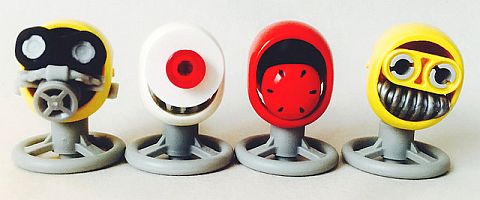
What do you think? How do you like Josephine’s ideas? Do you have your own LEGO greeble box? What’s your most interesting discovery so far? Feel free to share your thoughts and ideas in the comment section below! 😉
And you might also like to check out the following related posts:












Now that’s Impressive. Who needs LEGO to create different things, when all you need is LEGO parts and an imagination. Why wait for LEGO to create it for us when we could do it ourselves.
Yes, of course! That has always been the case. LEGO themselves considers their sets are springboards for further creations. 🙂
I will definitely have to study these pictures and try them out. Very interesting. I also like your greeble box!
I like my greeble box too! I have another one with minifig parts. 😀
Is that a pink crowbar, or is it just the lighting?
The glamorous burglar’s choice!
I have to keep my burglary tools girly. You know, so nobody suspects anything. 😉
Dag. I should be on the lookout for those… And a pink chainsaw…
I would definitely take a pink chainsaw too! 🙄
Yeah, I know about those wooden anatomy dolls and such.
This looks interesting, I wonder whether they’re very fragile.
Yeah, they very much look like those dolls! I tried out some of the connections myself, and they are quite sturdy. As many of them are not “official” connections, sometimes they can be a bit too tight, or too loose, but they are quite reliable.
I thought about having a box or container for mini figure parts, but I have all sorts of parts in various containers. Which is very funny because I’m usually very organized. I guess you can say it’s an “organized mess”. Lol. Most of my mini figures are always used in something. So, I don’t have a lot of mini figure parts. I do however have everything else in parts.
It takes a while until you come up with a storage system that works for you. And even if you do find one, it may change as your collection and your interests change. That’s why I always recommend to keep storage solutions cheap until you figure out what you want. I’m an army builder, so I have way too many extra minifig parts. 😀
About half of what I own is in old ice cream boxes…
Eat ice cream and play with LEGO? You are living the dream! 😀
Honestly, the one with the lightsaber hilt connected to the thing with the ball joint connector point(the grey one) looks like it’s sturdier than it should be. ((Same goes for all the robots, really – it’s weird seeing it connecting to things it isn’t meant to connect to, but those connections still looking very sturdy.))
Yeah, it’s worth trying them out, and as you will see, some work better than others. Most are pretty reliable though, without too much stress or looseness.
Very interesting techniques. I really like the one with the egg beater! That’s genius!
A lot of these parts are based around various standard measurements, when I think about it. If two parts have the same measurement in the connection, I guess they should work equally well…
That’s a really good point. Yes, LEGO is very good at keeping their parts compatible as much as possible. But you can still sometimes find unusual compatibilities that are quite surprising.
That’s one of my favorites too! 😀
I just recently put together a minifig box. Now I need a greeble box! Very inspiring article. I’m going to try this.
Most of my boxes are more like hotchpots…
Hotchpotch is good too! It means that you will likely find some long-forgotten treasure! 😀
Have fun! Greebling is a great pastime with lots of interesting discoveries. And you can do it with any parts. 🙂
I am an army builder too. I keep my sets intact in plastic containers ( big and small). I also keep the mini figures in with the sets they come in. I am sure that’s nothing new in a collectors world, but I thought I’d mention it on how I keep my collections together. There is a story about some of my miscellaneous Lego bricks. My Dad was walk a long on the sidewalk and noticed somebody threw away a bunch of Lego bricks in the garbage. So, he got them out of the garbage and washed them. After the various Lego bricks got dry. My Dad sent a large box filled with Lego bricks to me. They are all in great shape . So ,I have a couple of those pull out plastic drawers for my miscellaneous Lego bricks and that’s how I keep them . I was thinking of sorting them out, but isn’t the hunt part of the fun?Lol!
My father went into the flamingos’ pen (I think) at the zoo to pick up a red 2×8 brick… (I was somewhere else at the time, so I wasn’t really nagging him to do it…)
I was pleased, but I still cannot commend whole-heartedly on the action.
I’m always amazed when I hear people finding LEGO like that! I just assume most people would know the value, or at least donate them to a charity or school, instead of just throwing them away! Glad to hear your dad was able to rescue them! 🙂
What a Parent would do for the kids ( as crazy as it may be ). God bless the supportive parent.
Agree, although it felt a bit like Crazy for its own sake…
(But then, the flamingos wouldn’t eat the Lego and get sick, so that’s a good point…)
I’m fairly certain that flamingos live on red LEGO bricks. Otherwise why would they be pink? 🙄
Excellent article. Very helpful.